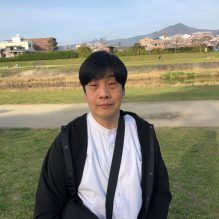-
About
- Kyoto Prize
-
Research Grants
-
Social Contributions
- Events
- News
This website uses cookies to improve the user experience. If you continue on this website, you will provide your consent to our use of cookies.
About
Research Grants
Social Contributions

Assistant Professor, Institute for Study of Humanities and Social Sciences, Doshisha University *Profile is at the time of the award.
2021Inamori Research GrantsBiology & Life sciences
I am very happy to have been selected for th Inamori Research Grant. I will work on this research project so that I can contribute to the clarification/elimination of discrimination, exclusion, and division in society.
The purpose of this study is to investigate the eviction problems that have arisen in urban development in Kyoto since World War II, and to clarify various aspects of postwar Kyoto’s development that have been hidden until now, and the complexity of its historical process. I have attempted to shed new light on the people who live under the bridges over the rivers that flow through Kyoto City, and to reconstruct the way they live and the reality of their lives. This study uses a comprehensive collection of articles on “residents under the bridge” published in Kyoto’s leading local newspaper, Kyoto Shinbun, from immediately after the end of the war to around 1965 and uses these articles as analytical material.
To summarize the findings of this study, the first thing that became clear is that the people living under the bridge had diverse backgrounds, each at the mercy of the social conditions of the time. Social changes, including the war, induced residents to live under the bridge, and demonstrated their own activism in their choice of residence was also demonstrated. In addition, the people living under the bridge were not only singles but also family households. Although they were in a stable situation, they were also engaged in labor, including rag pickers, and existed in a multi-layered social relationship of exclusion and affection. In the 1960s, the number of newspaper articles about the bridge began to decline, and in 1964, the people living under the bridge disappeared when Kyoto city carried out a simultaneous clearance of the bridge in 1964.
Biology & Life sciences
